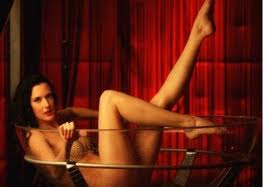Which perfect temp for your wine ?
Have you ever tasted a white wine at room temperature
(say around 20 ° C)? Otherwise, do the experiment. It is likely that you find
the wine too heavy.
Likewise, taste a red tannic wine at 10 ° C: the tannins
will appear harder, the bitterness may even disturb you.
Indeed, know that the temperature of a wine greatly
modifies the perception you have of it! This is why it is desirable to respect
service temperatures to highlight the qualities of the wine.
I propose you to see for each type of wine (red, white,
rosé, sweet), its ideal temperature of service, and especially to understand
why it is so ...
The Red wine
Nowadays if you go often to wine bars they propose to
drink your red wine chilled.
For me coming from a famous worldwide red wine region (Bordeaux) it is a NO NO.
For me coming from a famous worldwide red wine region (Bordeaux) it is a NO NO.
The service temperature of the red wine will be related to these 2 factors the presence of tannins, and the lower acidity
The lower red acidity must logically imply a higher operating temperature than the white: we do not
necessarily try to emphasize the acidity, but rather the “unctuosity” of the wine.
On the other hand, the perception of tannins varies greatly with temperature. When the wine is served
cold, the tannins are strengthened and appear harder. Indeed, the acidity is highlighted. In other words,
the tannin + acidity couple is harder in the mouth than the tannin + unctuous pair.
The only exception is when your red wine is light and little tannic
(like several red wines from Argentina Chile California),
you will be able to serve it more fresh than a robust red wine
because the acid flavor is underlined and put forward by the cold.
You can easily see this by making this little experiment: Squeeze a lemon, and drink its juice. If the juice is
served at room temperature, it will be more unpleasant to drink it than if served ice cold.
You’ve got it now ?
In short, a light red wine (that is to say acid and little tannic) will be served at 13-15 ° C,
while a robust red (ie tannic, unctuous) 15-18 ° C.
The White wine
As you may know, white wine is more acidic than red wine. Thus, the white wine makes you
salivate, with a fluid salivation characteristic of acidity.
The white wine being more acid than red, it is served
fresher to emphasize its acidity, and to emphasize
its freshness.
Now, let us take another white wine, less acid: for
example a white wine for ageing, which will be
round more in the mouth. In this case, it will be
advisable to serve it "a little warmer" because of
its reduced acidity. This will highlight his unctuosity!
To sum up, a dry white wine (ie unsweetened and acidic) will be served at 8-10 ° C,
while white for ageing can be served at 10-13 ° C
The Rosé wine
If you've gone so far, you've done the hardest! Rosé is a case similar to white wine.
In fact, the rosé results from a short maceration of grape skins + juice, which transmits
just a little color and aromas ... but no tannins (most rosés are not tannic).
Here is a wine on the fruit, acid and not (or little) tannic: this is the same approach
as for white wine.
The rosé will be served fresh to highlight its acidity (its freshness).
8-10 ° C is a good average temp.
The Dessert wine
Dessert wine is sweet wine: the term "dessert" is used to describe a
wine with a sugar content between 12g / L and 45g / L. Beyond that, it is called a sweet wine.
In short, in both cases, the unctuosity of the wine is brought
by its sugar. So imagine what could happen if you serve the
sweet wine at room temperature. The "important" temperature
emphasises the unctuosity of the wine (to the detriment of its
acidity).
Therefore, your sweet wine looks very heavy ... even sickening.This is why it is best to serve soft / sweet wines at 8-10 ° C.The sparkling wines (crémants, Champagne)
In this case, we try to emphasise the freshness (acidity) of the wine: The acidity and the bubbles
go together, the effervescent wine will be served colder. Another argument to convince you to
serve your Champagne very fresh.
The carbon dioxide dissolves better in the liquid (the sparkling wine in our case) when the
temperature is low. If you serve a hot sparkling soda you will be convinced of this phenomenon:
the effervescence is exacerbated, the bubble is coarse.
The same soda served well fresh makes it possible to have a
fine bubble and a CO2 well dissolved in your wine.
In summary, serve the effervescent at 8-10 ° C.





You can go with Gift voucher Brisbane offer by Golden Gondola. The gondola is a traditional symbol of love, and is the perfect place to celebrate a birthday, honeymoon, anniversary or any other special occasion in addition to a romantic Brisbane River cruise wedding proposal.
ReplyDeleteThanks & Regards
Romantic gifts Brisbane